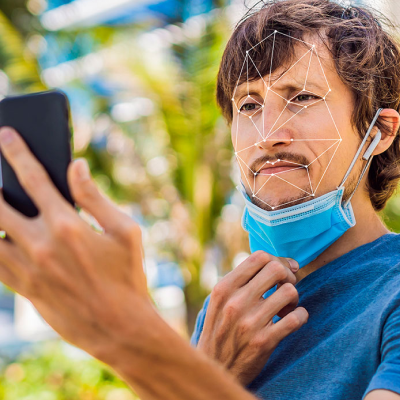
The number of tasks and transactions that we carry out digitally is growing incessantly. That requires the financial industry to expand its ability to reach new customers anytime and anywhere and create unprecedented solutions that enable companies to expand their business and revenue.
In order for this trend to continue growing reliably and securely, user identity verification has become a critical step for most of the procedures or transactions we perform remotely as well as in person.
We’re talking about operations such as signing up new customers, processing payments, authorizing purchases, making transfers, paying for a concert ticket, gaining access to a stadium and so on. Because all these everyday tasks can’t be done remotely without there being absolute certainty about the identity of the person on the other side of the screen.
That’s what the main financial institutions in Mexico, Colombia, Argentina, and Peru have realized over the last five years. The best example of this is how they’ve managed to make life easier for their customers thanks to biometric technology.
BBVA has acquired hundreds of thousands of new customers remotely thanks to digital onboarding, which allows them to be signed up in less than a minute simply by taking selfie. It has also enabled more than 50,000 Mexican retirees to provide proof of life to collect their pension with a simple phone call in which the bank authenticates the identity of each customer using just three seconds of their voice, in any language, including the country’s dialects, and from any telephone device.
See also: Digital mortgages: BCP sees loans approved in 24 hours
Such success stories have a very powerful impact on business, as the technology allows the opening of new accounts in less than a minute, at any time of day and from any location; on the financial inclusion of the elderly or those who aren’t tech savvy; and on the environment, since it’s no longer necessary to travel to a physical branch in order to open a bank account or to provide proof of life to collect a pension.
Biometric technology is based on a magic triangle: protecting the security of identification processes by eliminating the risk of password and pin number theft (because they are no longer needed); increasing economic benefits for companies by making processes more cost efficient and even achieving conversion funnels close to 90%; and improving the user experience by making identity verification processes fast, effortless, and simple.
You could never achieve this volume of transactions, with the level of security and user experience expected in the 21st century, using traditional authentication methods: something the customer knows—like a password—or something they have, i.e. two-factor authentication mechanisms.

But thanks to biometric technology based on artificial intelligence, we can now carry out any task or transaction using biometrics in a private, secure, and voluntary manner.
However, in the 21st century, technological security is also vital. For this reason, it’s more important than ever to have the following safeguards: biometric technologies certified by an independent organization that vouches for their quality, such as the NIST (National Institute of Standards and Technology) in the U.S.; state regulation that protects information security (ISO 27001); data protection (the federal law for the protection of personal data in possession of private parties in Mexico, last year’s 1581 law for the protection of personal data in Colombia, the California Consumer Privacy Act, or Europe’s general data protection regulation) demands certified anti-fraud standards (ISO 30107-3) or regulation such as the CNBV rules that apply to these technologies.
The progress made in recent years in technology, data protection and information security gives us the confidence to say that today we can indeed offer new, frictionless, and secure omnichannel experiences. Proof of this is the trust demonstrated by over 100 customers that are already utilizing our solutions, such as Deutsche Telekom, CaixaBank, Ventocom, BBVA, Mapfre, Acciona Mobility, Repsol and Prosegur, in 14 countries around the world.
Mauricio Guijarro, Sales Vice President of Americas at Veridas, has over two decades of experience in the cybersecurity and technology sector in Latin America and the U.S.. He specializes in sales and marketing strategy, which he’s applied to revenue and profit growth for the companies he has worked for.

